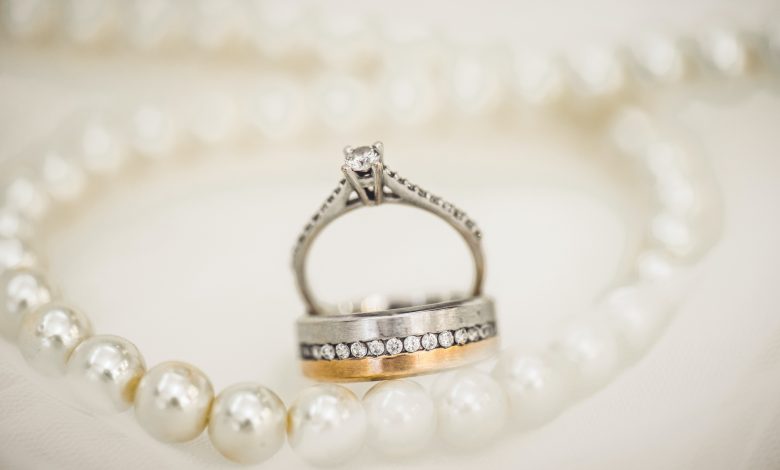
It’s a big and dangerous world we live in these days. It seems that there are threats and potential for loss looming around every corner. You never know when some unexpected event is going to pop up and turn everything on its head. That’s the sole reason for insurance existing. It’s a safety net to make sure that you’re never left too stuck out in the event that something goes catastrophically wrong. The range of insurance policies is vast. It ranges from big things like houses and cars, down to the tiny things like video games.
That’s the double-edged sword that is insurance. While on one side it’s going to save you in the event that, say, your house burns down, it also costs a lot. Insurance companies are businesses at the end of the day, not charities, meaning that the main objective of the company is to make money. With this endeavor, premiums can get expensive, and it’s possible, likely even, that you’re never going to have to claim on specific policies.
That’s what makes the insurance balance challenging to get right. Often people either don’t insure enough or insure too much and end up spending a fortune on their premiums. Now, it’s not a situation where you want to cut back on insurance for the big things. You need car insurance to legally drive. You also don’t want to cut back on your house insurance. Sure, it’s expensive, and the likelihood of you cashing in on it is small, but if something does happen to your house, at least you’re covered.
You don’t really want to be pulling back on your life insurance policy, either, at least if you already have one. That leaves only the nitty-gritty stuff that you can really afford to cut costs on. There are a few different small ticket item insurance policies you can get, but all of them fall under the umbrella of valuables insurance.
For the uninitiated, valuables insurance is coverage for items and property that are smaller than things like cars or a house, jewelry, for example. Most people don’t bother with it, either because they don’t know it exists or because they don’t think they need it. Both groups are as equally wrong as one another.
While you may not need valuables insurance at the end of the day, it is certainly still worth your time to look into it, do some calculations, and see where you stand with your premiums versus the risk and value of your items.
There are different types of valuables insurance, and each goes by a different name. There is the technology covering gadget insurance, jewelry insurance from companies that specialize in that very type of coverage, and even contents insurance that you can add on to your home insurance policy. Each of these has its pros and cons, and each excels in certain situations, but the ultimate question of whether you need it remains.
That’s what this article is here to help you with. Getting insurance for anything can be daunting, especially if you’re new to the whole ordeal. From deciding if you need it or not, to what items to cover, to what policies to use, to going and talking with an agent at the end of it all, it can seem overwhelming. But it needn’t be. Getting insurance is easy, so read on and learn what you need to know about whether or not you need valuables insurance.
How Do You Know if You Need Valuables Insurance?
There is one fundamental principle that we are going to continuously keep going back to throughout this article, and that is weighing up the cost of an insurance premium against the value of your item.
Everything you want to get insured comes with a premium. Your premium is the cost of insuring the item and often comes in the form of monthly or yearly payments. The premium is determined by the insurance company and changes depending on a number of factors.
The cost of your premium is calculated first by assessing the risk involved for the insurer. For example, if you get life insurance and you smoke, you’re more likely to die sooner than a nonsmoker; therefore, the risk for the insurer is higher, and the premium is higher. With valuables insurance, the risk calculation is a lot more nuanced. There are no major life-altering decisions that come into play; instead, it’s little things. What’s more is that, with small scale valuables insurance, it’s you who is going to want to be doing the most risk assessment, but we’re going to talk more about that in a few minutes.
After the risk is calculated, the insurer takes all of the coverage you want in your policy, as well as the value of the items that you want to be insured and uses it all to give you a premium quote that stands to be affordable to you, realistic to the insuring situation, and profitable for the insurance company.
You then need to take that premium, and using your own judgment, weigh it up against your own risk assessment, as well as the value of your items, to ultimately determine whether or not you need this particular insurance policy.
The process and things you need to consider differs from item to item, so let’s talk about a few of the most common ones.

Jewelry Insurance
Insuring one’s jewelry is perhaps the most common type of valuables insurance out there. Jewelry can get expensive and has a massive price range, from as little as a few dollars, all the way up to the literal millions and billions for the select few of society.
Due to the nature of this beast, insuring your jewelry can be a complicated process to complete. This is especially highlighted when you think about sentimental value, which is often the reason someone places value on their jewelry in the first place.
Sure, an heirloom necklace that you got from your Gran may be worth the world to you, and rightfully so, but insurance companies are heartless organizations and only look at cold hard facts and figures, meaning that the sentimental value of your item plays no part in the judgment of your premium.
For example, say you have an expensive diamond ring that you got as a birthday present. It’s a beautiful ring, but it holds no special place in your heart. Then you have a ring that your mother gave you. It’s simple gold, with no decoration or anything. Your father gave it to her as a gift, and she passed it on to you. Needless to say, that ring is worth so much more to you than the diamond one. However, it’s only cheap gold. Therefore, the insurance company agrees to cover the diamond ring for $5,000 dollars, but only wants to cover the heirloom for $50 dollars.
That’s the difficulty when it comes to placing value on your jewelry. Unfortunately, the best approach you can take is to mirror the insurance companies’ stance on this. In the event that an item is lost or stolen, you can’t get that sentiment back, even with a replacement, so getting insurance for these items is ultimately pointless.
Therefore, we want to be looking at cash values, as hard as it may be to throw away sentimental value.
With this new approach, let’s look at what we should be thinking about. With jewelry insurance, you’re more than likely going to be getting a policy revolving around what is called scheduled or listed insurance. What that means is that the insurance policy is not a blanket coverage. You need to explicitly name the items that you want to be covered. Anything not named is not included.
With that in mind, we need to mention that this policy isn’t worth it for low-value items. There are other types of insurance out there that do provide blanket coverage, namely contents insurance (more on that in a bit), so to make the most of your money, only consider the expensive pieces you have for this kind of insurance.
So say you have a few jewelry pieces that are worth big bucks, and you want them insured. Before you even approach an insurance company, there are a few things that you’re going to need.
First is an appraisal. Again, given the nature of jewelry and the difference in price seemingly insignificant details can make, you’re going to need a professional opinion on the cost and quality of your jewelry. Not only does this certify it as real, but it also gets a professional value put on the item that both you and the insurer can use as reference. It’s worth pointing out that you can’t get an appraisal from the same place you bought the piece, as the retailer is more likely to overvalue the item, so make sure you’re going to an independent specialist.
If your jewelry has any gemstones, then you’re also going to need a certificate for that, especially bigger gems or diamonds. Gemstones are a finicky topic. There’s a difference in cuts and sizes and all sorts of minuscule things that swing the price ludicrously high or low. For that reason, an insurer is going to need you to get your gems certified and graded before agreeing on a premium policy.
You also want to take photos of all of your jewelry pieces and make photocopies of all certificates and appraisals and any other paperwork involved in the process for your own records. Also, if you have a copy of the receipt for the piece of jewelry, you’re going to want that too.
With all this in hand, you can head to your insurer or give a specialist a call and get the ball moving. Your agent should give you a quote, and then it’s up to you whether or not you agree to it.
In those terms, it comes down to risk. If you wear the jewelry extensively and bring it on holidays with you, the risk of something happening to it is much higher than if you have it sitting in a safe or deposit box all year round, so use your own judgment here.
Home and Contents Insurance
We touched on this briefly before, and now it’s time to dive into it with more detail. Keep in mind, this is only available with home insurance packages, so if you’re not in a position to be buying a house or you don’t already have one, then this probably isn’t the option for you.
When you get home insurance, you can get a blanket contents insurance addon. This covers the contents of your home in the event of loss, theft, damage, etc., up to a specific value, usually around the $15,000 dollar mark.
This is a great addition for a lot of people to their policies, but for a lot, it also isn’t enough. 15 grand may seem massive on paper, but when all your earthly possessions go up in smoke, you’re going to realize just how low that number really is.
To counteract this, insurers also allow you to schedule items. This is the same as the listing item process that we talked about earlier. You name individual things that you want to cover outside of that blanket limit, and you get individual coverage for them. Again, the price of your premium is determined by the value of the item, so use your own judgment as to whether or not it is worth it.
The level of detail and nuance with home and contents insurance isn’t nearly as deep as it is with jewelry insurance, so there isn’t as much to consider and think about. As a general term, it is probably worth your while adding it on to your home insurance package, but as for scheduling items, only explore that avenue if you own some seriously expensive stuff that is going to fill up a large chunk of that $15,000 dollar threshold immediately.

Gadget Insurance
Gadget insurance is relatively self-explanatory. It’s insurance for your gadgets – specifically, expensive pieces of tech. We’re talking about phones, tablets, laptops, PCs, TVs, and so on.
Whether or not you need this type of insurance depends on your lifestyle and swings drastically in either direction depending. You might think that is the obvious deciding factor in getting this type of insurance, but it actually isn’t. No, the main factor here is how much you move your items about. You see, you can get gadget insurance from a lot of different places. Some traditional insurers even offer blanket policies for gadget insurance. In that case, the more gadgets you have, the better this option is for you.
With these, you get coverage on an individual or listed item basis. In other words, you get insurance for the items you want. This is where moving about comes in. Say, for example, you have a $2,000 dollar PC. This is some serious hardware, state of the art, but all it does is sit on your desk all day. The chances of this type of machine getting damaged or even stopping working is tiny.
Oppose that with your phone. Maybe it cost you $400 dollars. This phone goes with you everywhere. It gets thrown about, gets bumps, tumbles, and falls on the ground more than you can comprehend. You are much better off insuring that phone instead of the PC.
While the PC may be worth more and hurt more in the event it stops working, it’s unlikely. On top of that, because of the value of the hardware, your premium for it is going to be much higher than the phone. However, with the phone, your premium is going to be nice and affordable. As well as that, the chances of your phone going missing, getting damaged, or even stolen, is way higher than your PC.
Of course, it all comes back to the cost risk value principle. No two situations are the same when it comes to getting insurance, even for gadgets, so whether or not you get, it needs to be decided by you. No one can realistically make that choice for you.
With all this in mind, determine whether or not you want coverage for your items. At the very least, it is probably worth insuring your phone, and if you’re a student, maybe your laptop too.
Is It for You?
Hopefully, this has given you some idea of how to determine whether or not you need valuables insurance, as well as what types of valuables insurance are available to you. It is a hyper-competitive market, and despite the obvious nature of it, it is relatively new to the insurance game, especially gadget insurance, so keep your eye on the space to see what developments come out in the coming months and years.
We’ve talked about it a lot, but we need to reiterate it one last time. Whether or not you get an insurance policy all comes down to weighing up the three factors that are involved in it: risk, price, and value.
Both you and your insurer need to do a risk assessment. With large scale insurance, this mainly falls on your insurer’s shoulders. For valuables insurance, it is more so your responsibility. Determine how likely it is that your items are going to be lost, damaged, or stolen, and work from there.
Then, you need to weigh up the price that the insurer gives you. The price that the insurer usually gives you is determined on a case by case basis. At least, that’s the case when it comes to significant insurance premiums. For valuables insurance, it is more often than not a one size fits all price. Regardless, you need to look at this price and leverage it against the value of your item and the risk involved with it.
Lastly, the value of your item. Needless to say, how much your thing is worth is going to determine whether or not you get it insured in the first place. You’re not going to go and get some worthless piece of jewelry insured when your premium is higher than the value of the piece in the first place. So look at how much your item is actually worth, how much your insurer is willing to pay out if you need to claim, and go from there.



